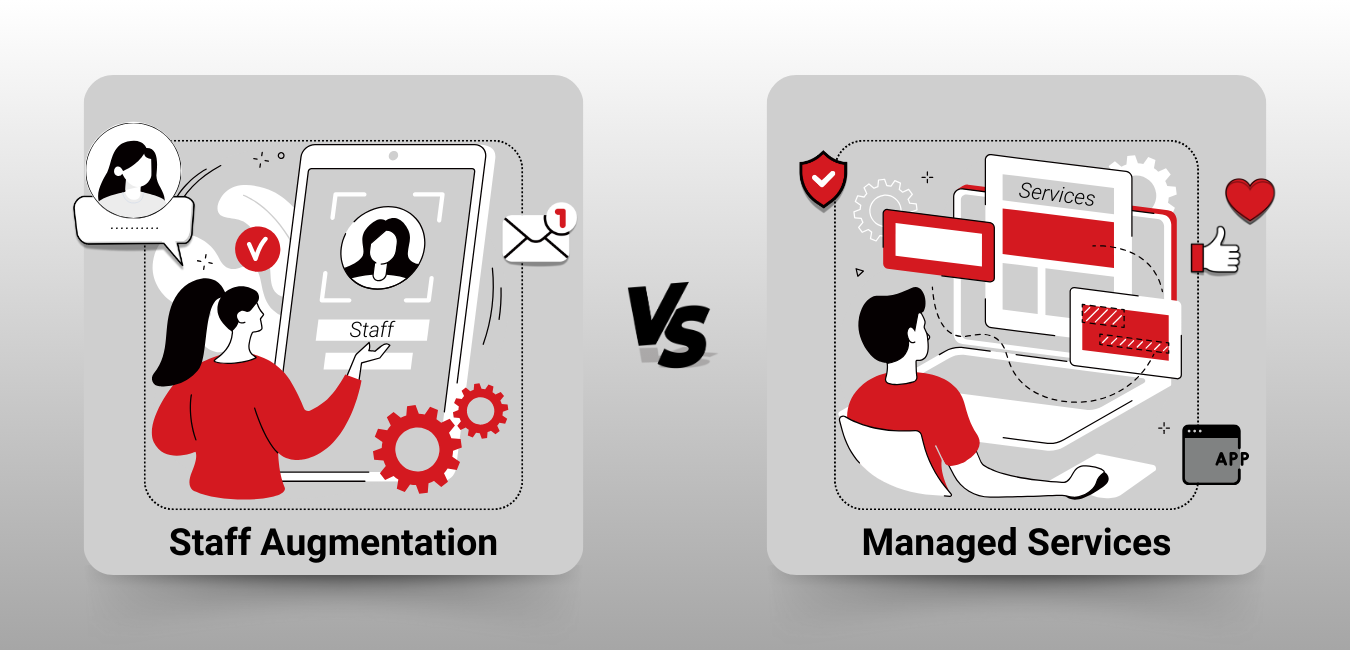
Choosing the right IT service model is crucial for ensuring your business stays competitive, cost-efficient, and adaptable in today’s ever-evolving digital landscape.
According to Grand View Research, the global managed services market size was estimated at USD 299.01 billion in 2023 and is anticipated to grow at a compound annual growth rate (CAGR) of 13.6% from 2023 to 2030. This prognosis highlights the growing reliance on managed services, indicating their increasing importance for organizations’ IT infrastructure.
Grand View Research also found that 74% of companies globally are using or planning to use an IT staff augmentation strategy in 2024 to bridge critical skill gaps. The survey demonstrates the widespread adoption of staff augmentation to address specific skill needs within organizations.
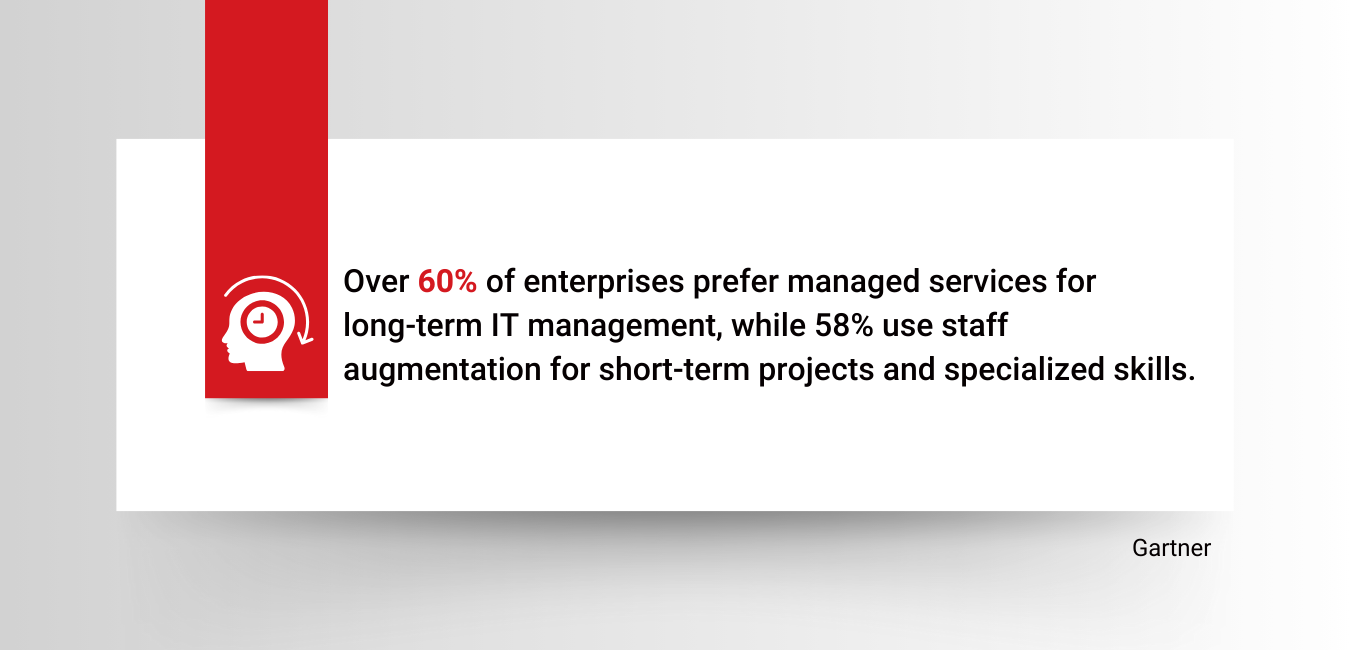
Influenced by this escalating demand for IT services, we will look into the key specifics of managed services vs staff augmentation, outlining their main differences in this article. We aim to help decision-makers better understand both collaboration models and select the right approach according to their needs.
Understanding the Managed Services Model
Managed IT services involve outsourcing specific IT functions to a third-party provider. Under this engagement model, a managed service provider (MSP) takes full responsibility for the ongoing management, maintenance, and support of your company’s IT infrastructure, systems, and applications.
The provided services typically include proactive monitoring, cybersecurity, data backup, and network management. The managed services model allows businesses to focus on their core activities while ensuring optimal efficiency and continuity of their IT operations.
According to CompTIA, organizations that utilize managed services report a 45% reduction in IT operational costs and a 50% increase in overall productivity. Learn more about the strategic benefits of managed IT services in this article.
Understanding the Staff Augmentation Model
The staff augmentation model enables you to expand your in-house IT team by bringing in external professionals with specialized skills. These IT experts are integrated into your existing team and work under your company’s direction to support specific projects, fill skill gaps, or handle increased workloads.
Staff augmentation allows your organization to maintain control over IT operations while gaining the flexibility to scale your workforce up or down based on project needs. This model is ideal for businesses that need to quickly access specific expertise without the long-term and costly commitment of hiring full-time employees.
As per Staffing Industry Analysts, 59% of businesses say that the primary reason for choosing staff augmentation is the ability to quickly scale their teams based on project demands.
Managed Services vs Staff Augmentation – Key Differences
Service Scope and Responsibility
- Managed Services: Under the managed services model, a third-party provider takes full responsibility for the management and operation of specific IT functions or entire IT infrastructure. The vendor proactively monitors, maintains, and supports these services, often offering a comprehensive solution that includes everything from IT strategy to day-to-day operations.
- Staff Augmentation: This model involves supplementing your in-house IT team with external IT professionals on a temporary or long-term basis. The augmented staff works under your company’s direction and integrates into your existing team to fulfill specific roles, providing additional expertise or capacity as needed.
Control and Management
- Managed Services: The MSP fully controls and manages your organization’s IT functions, including making decisions on technology, processes, and procedures. You as a client do not have direct control over these areas, but you benefit from the vendor’s expertise and resources.
- Staff Augmentation: Your organization retains full control over the IT projects, tasks, and workflows. The augmented staff follows your internal processes and is managed directly by your in-house team, ensuring alignment with your company’s goals.
Cost Structure
- Managed Services: Typically, managed services are offered on a subscription or fixed-fee basis, providing predictable monthly costs. They can be cost-effective if you are looking for an all-in-one IT solution.
- Staff Augmentation: Costs in staff augmentation are usually based on the number of external personnel added and the engagement duration. This model offers flexibility in scaling the workforce up or down as needed, with costs tied directly to the number of resources you utilize.
Flexibility and Scalability
- Managed Services: Managed services are designed to offer scalable solutions, but changes often involve revising contracts or service levels. The model is less flexible in terms of immediate changes to personnel or scope since it’s structured around predefined services.
- Staff Augmentation: This highly flexible model allows you to quickly scale your team up or down based on project demands. It’s ideal for organizations with fluctuating needs or specific projects that require specialized skills for a limited time.
Expertise and Skill Level
- Managed Services: MSPs typically bring a broad range of expertise and experience across various IT domains, offering access to advanced technologies and best practices that your in-house team might lack.
- Staff Augmentation: You can choose professionals with the exact skills and expertise required for your specific projects, allowing you to fill gaps in your in-house team without the need to hire full-time employees.
Long-Term vs Short-Term Needs
- Managed Services: This model is best suited for long-term IT management needs where ongoing support, maintenance, and strategic guidance are required. It’s ideal for businesses looking for a partner to handle their IT environment comprehensively.
- Staff Augmentation: It is typically used for short-term projects or to address temporary skill gaps, during increased workloads, or when specialized expertise is needed for a specific period. However, staff augmentation can also be used for more continuous engagement when you want to extend your in-house IT team with qualified specialists in the long term.
According to Gartner, over 60% of enterprises prefer managed services for long-term IT management, while 58% use staff augmentation for short-term projects and specialized skills.
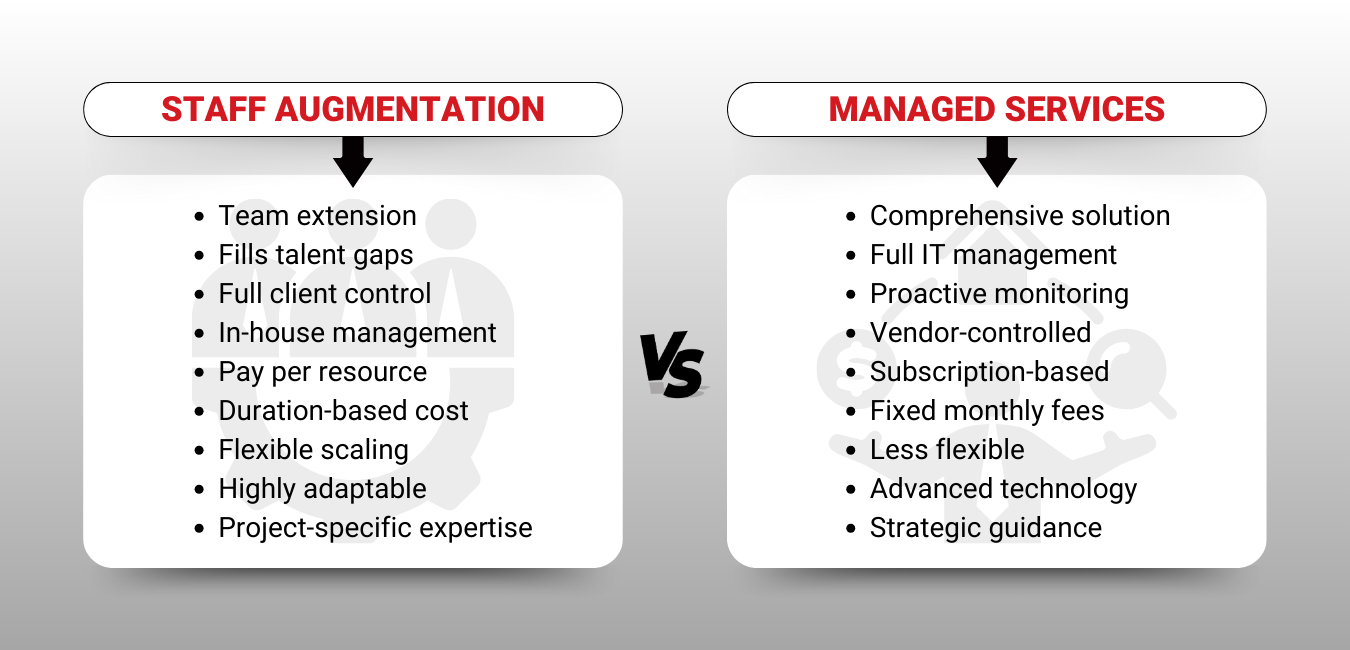
Managed Services vs Staff Augmentation – Use Cases and Scenarios
When to Choose Managed Services
We would advise you to select managed services when your organization requires comprehensive, ongoing IT support and management. This model is ideal if you lack the internal resources or expertise to handle complex IT functions, need to ensure 24/7 system reliability and security, or want to focus more on your core business activities rather than IT operations.
When to Opt for Staff Augmentation
You should ideally choose staff augmentation when you need to quickly scale your IT team for short-term projects or address specific skill gaps without the commitment of hiring full-time employees. The model allows you to maintain control over project management while accessing the exact skills you need, receiving a flexible and cost-effective solution.
Hybrid Approaches
Combining managed services and staff augmentation is possible when your organization requires both ongoing IT management and the flexibility to scale your team for specific projects. This approach is useful if you need a service provider to handle routine operations, such as network monitoring and cybersecurity, while also bringing in specialized talent for software development projects or system upgrades.
Recap
In conclusion, choosing between managed services and staff augmentation depends on your organization’s current IT landscape and specific needs – whether you require a comprehensive solution managed by an external provider or flexible expertise under your governance.
In case you haven’t decided between managed services and staff augmentation yet or wish to find out how each model would fit your specific IT scenario, we invite you to benefit from our free IT consultation offer.
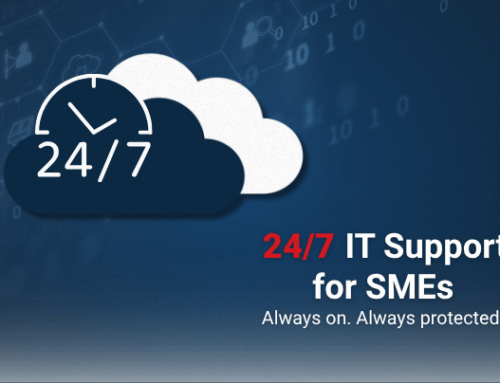
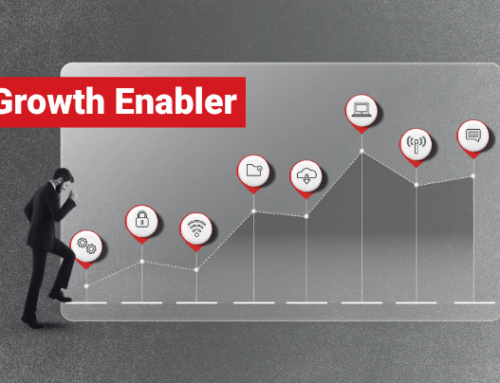
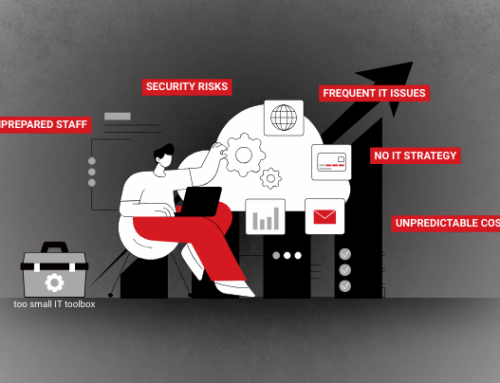
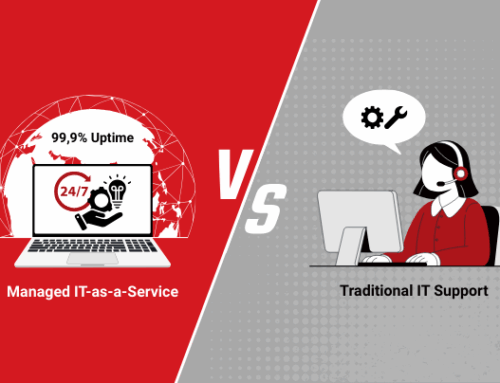

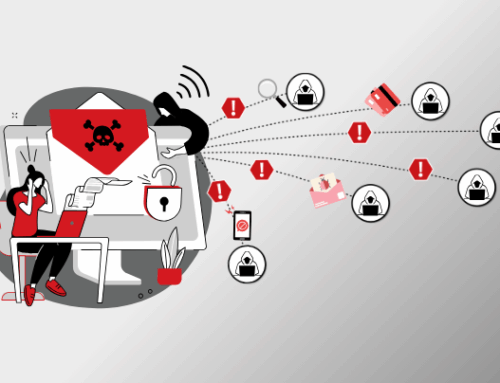


Leave A Comment